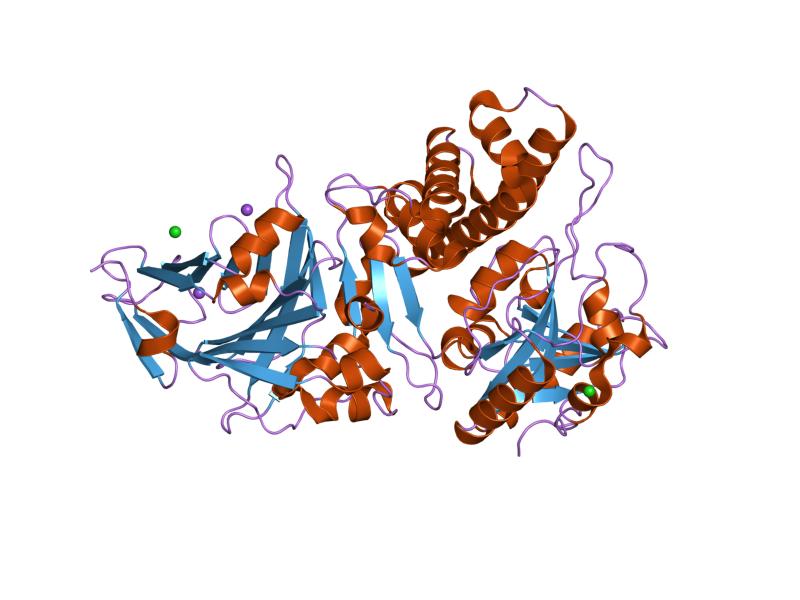Toxins
Warning: dangerous toxins ahead.
The process of Pseudomonas aeruginosa becoming toxic to
its host is an extremely interesting one. The first step to this
process is for the Pseudomonas aeruginosa bacteria gain
access into the body. For the most part, this is done by unknown
contact or through abrasions in tissues. The bacteria then uses its
flagella to help “swim” to a particular site to begin the infection process. Once there, Pseudomonas aeruginosa begins to
release extracellular enzymes. These enzymes, elastase (shown in
figure to the right) and alkaline protease, help to break down the
proteins and peptides of the host organism. The importance of this
is that it allows the bacterium to bind to the mucus layers that
line intestines. This eventually allows for the bacterium to
complete the colonization process and produce the biofilm layer
insuring its protection from antibodies, antibiotics, and
phagocytotic white blood cells.
process. Once there, Pseudomonas aeruginosa begins to
release extracellular enzymes. These enzymes, elastase (shown in
figure to the right) and alkaline protease, help to break down the
proteins and peptides of the host organism. The importance of this
is that it allows the bacterium to bind to the mucus layers that
line intestines. This eventually allows for the bacterium to
complete the colonization process and produce the biofilm layer
insuring its protection from antibodies, antibiotics, and
phagocytotic white blood cells.
 Once
a safe biofilm colony has formed, Pseudomonas aeruginosa
produces its lethal toxins: Exotoxin A (illustrated in figure to the
left) and exoenzyme S. Exotoxin A, once released from the bacterium,
attacks the cells of the host and inhibits the ability of the host
cells to undergo protein synthesis. Protein synthesis is important
to cells because it allows for the production of proteins that are
used in enzymes, cellular structures, and hormones. The function of
exoenzyme S is not as well understood. However, it is thought that
it restricts the immune function of phagocytotic white blood cells,
preventing them from getting in the way of Pseudomonas
aeruginosa during the invasion process.
Once
a safe biofilm colony has formed, Pseudomonas aeruginosa
produces its lethal toxins: Exotoxin A (illustrated in figure to the
left) and exoenzyme S. Exotoxin A, once released from the bacterium,
attacks the cells of the host and inhibits the ability of the host
cells to undergo protein synthesis. Protein synthesis is important
to cells because it allows for the production of proteins that are
used in enzymes, cellular structures, and hormones. The function of
exoenzyme S is not as well understood. However, it is thought that
it restricts the immune function of phagocytotic white blood cells,
preventing them from getting in the way of Pseudomonas
aeruginosa during the invasion process.
Pictures on this page from WikiCommons.
To learn about how these toxin take a toll on their hosts, visit my interactions page!
To learn more about these toxins, visit:
The Journal of Infectious Diseases
